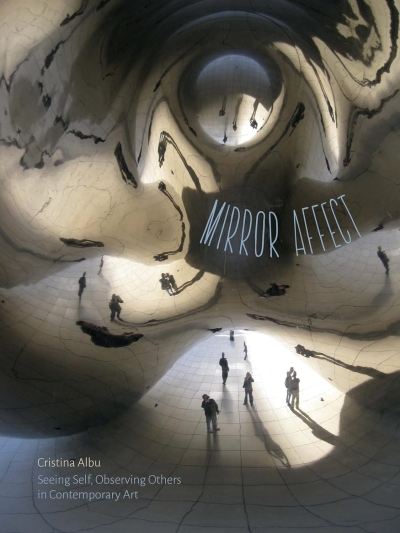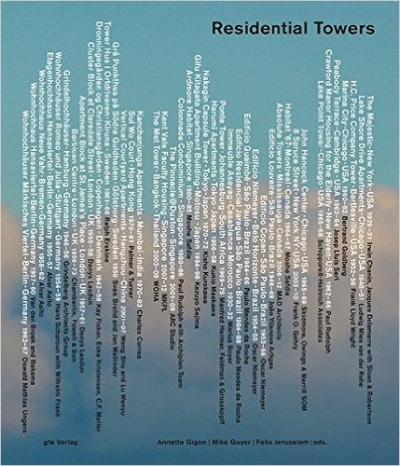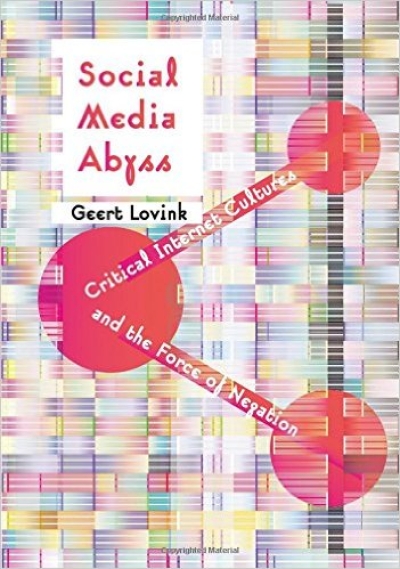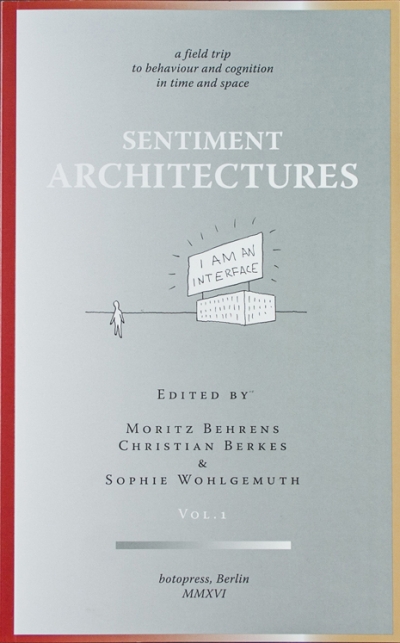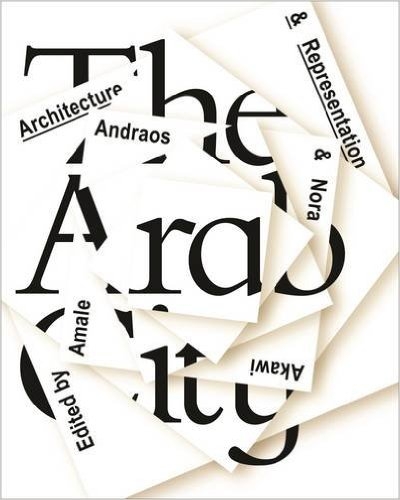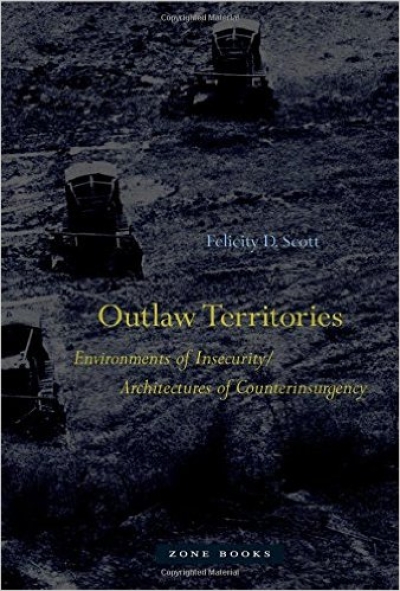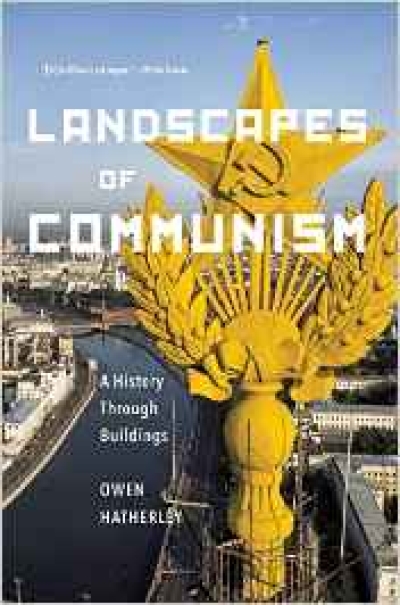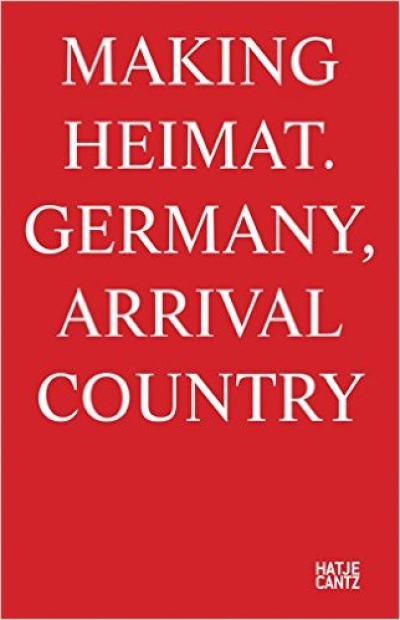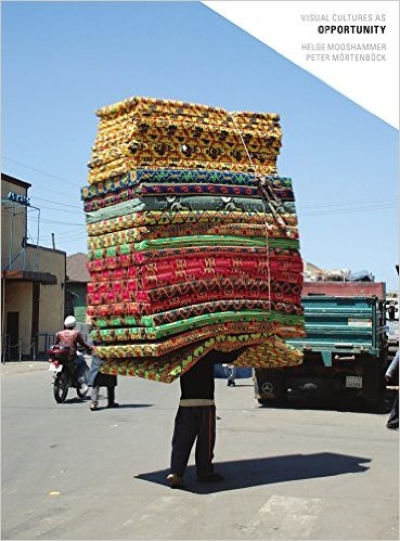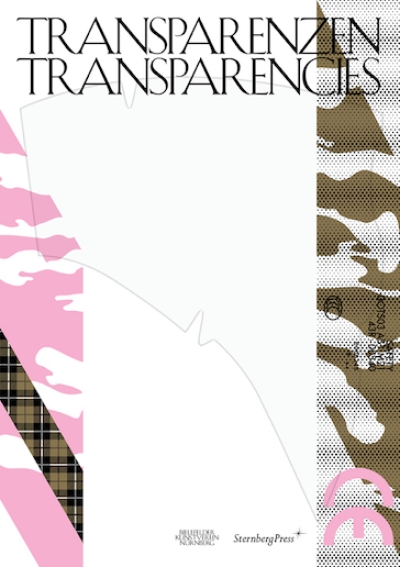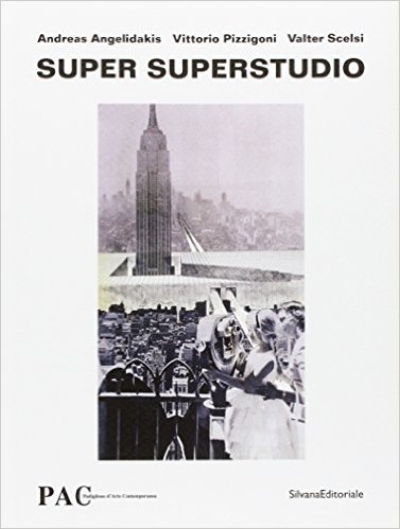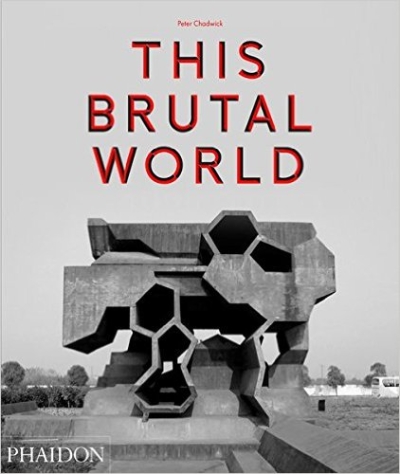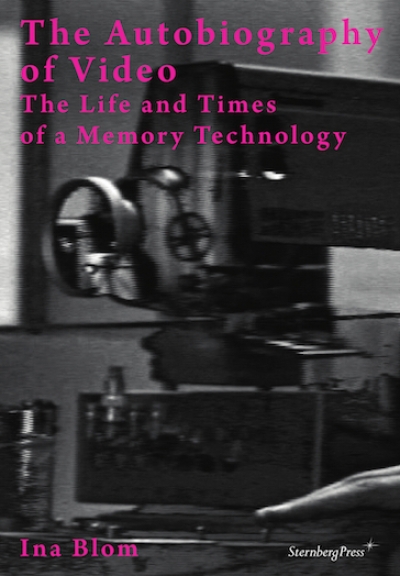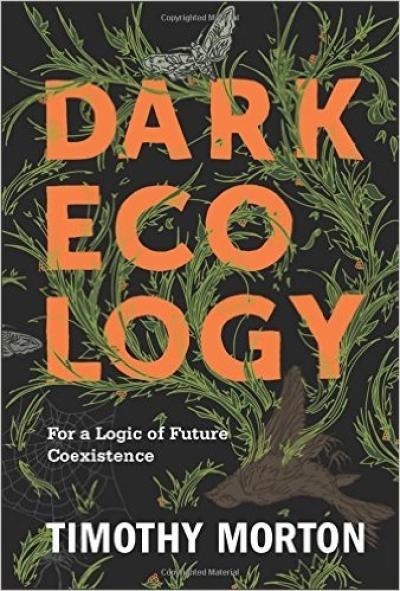Hannah Neate, Ruth Craggs
Modern Futures
gerade nicht auf Lager
Douglas Spencer
The Architecture of Neoliberalism: How Contemporary…
gerade nicht auf Lager
Freek Lomme (Ed.)
Can You Feel it? Effectuating Tactility and Print in the…
Guillaume Sibertin-Blanc
State and Politics: Deleuze and Guattari on Marx
Christoph Keller
Paranomia
gerade nicht auf Lager
Philipp Meuser
Seismic Modernism. Architecture and Housing in Soviet…
Cartha
On Relations in Architecture
gerade nicht auf Lager
Michaela Meise
Eshi Addis Ababa
gerade nicht auf Lager
Takahiro Kurashima
Poemotion 3
gerade nicht auf Lager
Han Byung-Chul
Die Austreibung des Anderen. Gesellschaft, Wahrnehmung und…
Cate St Hill
This is Temporary. How Transient Projects are Redefining…
gerade nicht auf Lager
Carlo Ratti, Matthew Claudel
The City of Tomorrow: Sensors, Networks, Hackers, and the…
Henri Lefebvre
Metaphilosophy
Eduard Helman
Rhetoric of Logos: A Primer for Visual Language
gerade nicht auf Lager
Marie Neurath, Robin Kinross
Die Transformierer. Entstehung und Prinzipien von Isotype
gerade nicht auf Lager
P. Lewis, M. Tsurumaki, D. J. Lewis
Manual of Section
gerade nicht auf Lager
W. Nägeli, N. Kirn Tajeri (Hg.)
Kleine Eingriffe: Neues Wohnen im Bestand der…
gerade nicht auf Lager
Peter Granser
El Alto. Freddy Mamani Silvestre
gerade nicht auf Lager
Omar Kholeif (Ed.)
Electronic Superhighway. From Experiments in Art and…
gerade nicht auf Lager
Bill Caplan
Buildings are for People. Human Ecological Design
gerade nicht auf Lager
Hannah Black
Dark Pool Party
R. Pasel, A. Hagner, H. Drexler, R. Boch
Home not Shelter! Gemeinsam leben statt getrennt wohnen
Alessandro Biamonti
Archiflop. A guide to the most spectacular failures in the…
Isabell Lorey, Gundula Ludwig, Ruth…
Foucaults Gegenwart. Sexualität - Sorge - Revolution
Brigitta Kuster
Choix d'un passé. Transnationale Vergegenwärtigungen…
Simon Roloff
Der Stellenlose: Robert Walsers Poetik des Sozialstaats
gerade nicht auf Lager
Jace Clayton (aka DJ Rupture)
Uproot. Travels in 21st-Century Music and Digital Culture
gerade nicht auf Lager
Nicolas Bourriaud
The Exform
gerade nicht auf Lager
Blanco, Galan, Carrasco, Llopis, Vezier…
After Belonging: Objects, Spaces, and Territories of the…
gerade nicht auf Lager
Sven Quadflieg, Gregor Theune (Eds.)
Nadogradnje. Urban Self-Regulation in Post-Yugoslav Cities
Regina Bittner, Elke Krasny (Hg)
Auf Reserve: Haushalten! Historische Modelle und aktuelle…
gerade nicht auf Lager
Karin Harrasser
Prothesen. Figuren einer lädierten Moderne
Frieze Magazine
frieze A to Z of Contemporary Art
gerade nicht auf Lager
Leonardo Finotti
A Collection of Latin American Modern Architecture
gerade nicht auf Lager
Werner Sewing
No more learning from Las Vegas. Stadt, Wohnen oder…
gerade nicht auf Lager
Yuk Hui
On the Existence of Digital Objects
gerade nicht auf Lager
Alina Serban & Kalliopi Dimou,…
Enchanting Views: Romanian Black Sea Tourism Planning and…
gerade nicht auf Lager
Andre Lepecki
Singularities. Dance in the Age of Performance
gerade nicht auf Lager
M. R. Stein, L. Miller, M. Henrichs (Hg)
Blueprint for Counter Education. Curriculum, Handbook, Eall…
gerade nicht auf Lager
Owen Hatherley
The Chaplin Machine. Slapstick, Fordism and the Communist…
Lina Dokuzović
Struggles for Living Learning. Within Emergent Knowledge…
gerade nicht auf Lager
Marcus Quent (Hg)
Absolute Gegenwart
gerade nicht auf Lager
Fabian Frenzel
Slumming It: The Tourist Valorisation of Urban Poverty
gerade nicht auf Lager
Keller Easterling
Extrastatecraft. The Power of Infrastructure Space
Yuk Hui, Andreas Broeckmann
30 Years after Les Immatériaux: Art, Science and Theory
gerade nicht auf Lager
Jacques Lucan
Composition, Non-Composition. Architecture and Theory in…
gerade nicht auf Lager
Seth Price
Fuck Seth Price (Second Edition, Hardcover)
gerade nicht auf Lager
J. Herzog, P. de Meuron
Herzog de Meuron. Trügerische Transparenz. Beobachtungen…
Florentine Sack
Open House 2. Gestaltungskriterien für eine neue…
Beti Zerovc
When Attitudes Become the Norm: The Contemporary Curator…
gerade nicht auf Lager
Luca Lo Pinto, Vanessa Joan Müller (Eds…
Frederick Kiesler. Function Follows Vision, Vision Follows…
gerade nicht auf Lager
Thun-Hohenstein, Bogner, Lind, Vischer…
Friedrich Kiesler – Lebenswelten / Life Visions
gerade nicht auf Lager
Ruben Pater
The Politics of Design: A (Not So) Global Manual for Visual…
gerade nicht auf Lager
Giovanna Silva
Syria, A Travel Guide to Disappearance
Amie Siegel
Double Negative. Ricochet 10
Jens Balzer
Pop. Ein Panorama der Gegenwart
gerade nicht auf Lager
Timothy D. Taylor
Music and Capitalism. A History of the Present
GRAFT
Architecture Activism
gerade nicht auf Lager
Nav Haq (Ed.)
RAVE. Rave and its Influence on Art and Culture
gerade nicht auf Lager
Trudy Nieuwenhuys, Gemeente Museum Den…
Constant. New Babylon. To Us, Liberty
gerade nicht auf Lager
Borja Ballbé
Ordinary Landscapes. Paisajes comunes
Riet Wijnen (Ed.)
abstraction creation, art non figuratif 1932
gerade nicht auf Lager
A. Lepik, V. S. Bader (Hg)
World of Malls. Architekturen des Konsums
C. Menrad, H. Creighton (Eds.)
William Krisel's Palm Springs
gerade nicht auf Lager
Brandon Labelle
Overheard and Interrupted
gerade nicht auf Lager
Jessica Helfand
Design. The Invention of Desire
Stephen Prina
galesburg, illinois+
gerade nicht auf Lager
Marc Angélil, Charlotte Malterre-…
Housing Cairo
Cristina Albu
Mirror Affect. Seeing Self, Observing Others in…
gerade nicht auf Lager
Antje Ehmann, Carles Guerra (Eds.)
Harun Farocki. Another Kind of Empathy
gerade nicht auf Lager
T. J. Demos
Decolonizing Nature: Contemporary Art and the Politics of…
gerade nicht auf Lager
Gloria Moure(Ed.)
Behind the facts. Interfunktionen 1968-1975
Roberto Simanowski
Facebook-Gesellschaft
Berliner Hefte zu Geschichte und…
Die Mauerpark-Affäre
gerade nicht auf Lager
François J. Bonnet
The Order of Sounds. A Sonorous Archipelago
gerade nicht auf Lager
Markus Miessen
Crossbenching: Toward a Proactive Mode of Participation,…
gerade nicht auf Lager
Francesca Balena Arista
Poltronova Backstage: Archizoom, Sottsass and Superstudio.…
gerade nicht auf Lager
David Joselit
Nach Kunst
gerade nicht auf Lager
Frank Berzbach
Formbewusstsein. Eine kleine Vernetzung der alltäglichen…
gerade nicht auf Lager
Jacek Mrowczyk
VeryGraphic. Polish Designers of the 20th Century
Sabine Bitter & Helmut Weber
Front, Field, Line, Plane. Researching the Militant Image
gerade nicht auf Lager
Annette Gigon, Mike Guyer, Felix…
Residential Towers
gerade nicht auf Lager
9. Berlin Biennale für zeitgenössische…
The Present in Drag
gerade nicht auf Lager
Geert Lovink
Social Media Abyss. Critical Internet Cultures and the…
Moritz Behrens, Christian Berkes,…
Sentiment Architectures. A Field Trip to Behaviour and…
gerade nicht auf Lager
Donna J. Haraway
Manifestly Haraway
A. Andraos, N. Akawi (eds)
The Arab City: Architecture and Representation
gerade nicht auf Lager
HKW (Ed.)
Nervous Systems
gerade nicht auf Lager
Felicity D. Scott
Outlaw Territories. Environments of Insecurity/…
gerade nicht auf Lager
Owen Hatherley
Landscapes of Communism. A History Through Buildings
Rashid Ali, Andrew Cross
Mogadishu. Lost Moderns
gerade nicht auf Lager
Schmal, Elser, Scheuermann (eds.)
Making Heimat. Germany, Arrival Country
Helge Mooshammer, Peter Mörtenböck
Visual Cultures as Opportunity
gerade nicht auf Lager
Simone Neuenschwander, Thomas Thiel (…
Transparenzen/Transparencies
gerade nicht auf Lager
A. Angelidakis, V. Pizzigoni, V. Scelsi…
Super Superstudio
gerade nicht auf Lager
Peter Chadwick
This Brutal World
gerade nicht auf Lager
Ina Blom
The Autobiography of Video. The Life and Times of a Memory…
gerade nicht auf Lager
Timothy Morton
Dark Ecology. For a Logic of Future Coexistence





































































